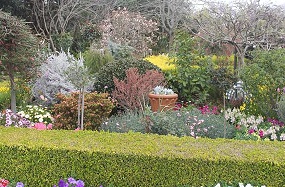 Study the basics of horticulture and apply it to growing herbs at a professional level
Study the basics of horticulture and apply it to growing herbs at a professional level
A 700 hour course designed for those who work, or wish to work, in the area of growing and using herbs. This course is similar to other VHT002 horticulture certificates in its introductory (core) units, but devotes 50% of the course to topics specifically related to growing, harvesting, using, and marketing of herbs and herb products.
The Core Units are divided into the following sections:
1. Introduction to Plants -Taxonomy, plant families, pressing plants, basic botany.
2. Plant Culture -Planting, potting, plant selection, pruning, irrigation, tools and machinery.
3. Soils and Nutrition -Soil structure, chemistry, nutrition, potting media.
4. Plant Identification and Use -Seed harvesting, storage, germination treatments, cuttings, etc.
5. Pests, Diseases and Weeds -Identification and treatment (chemical and non-chemical).
Accredited through International Accreditation & Recognition Council
How this differs to the Certificate in Herbs
This course is a broader based course. It teaches you a little less about herbs and a little more about horticulture than the other certificate. For someone already working in the herb industry, the Certificate in Herbs is likely to be more relevant. If you are new to this industry, either course is good; but keep in mind that a more broad based understanding of horticulture can sometimes offer more options for employment and career development when you graduate.